A1 Quality Logistical Solutions
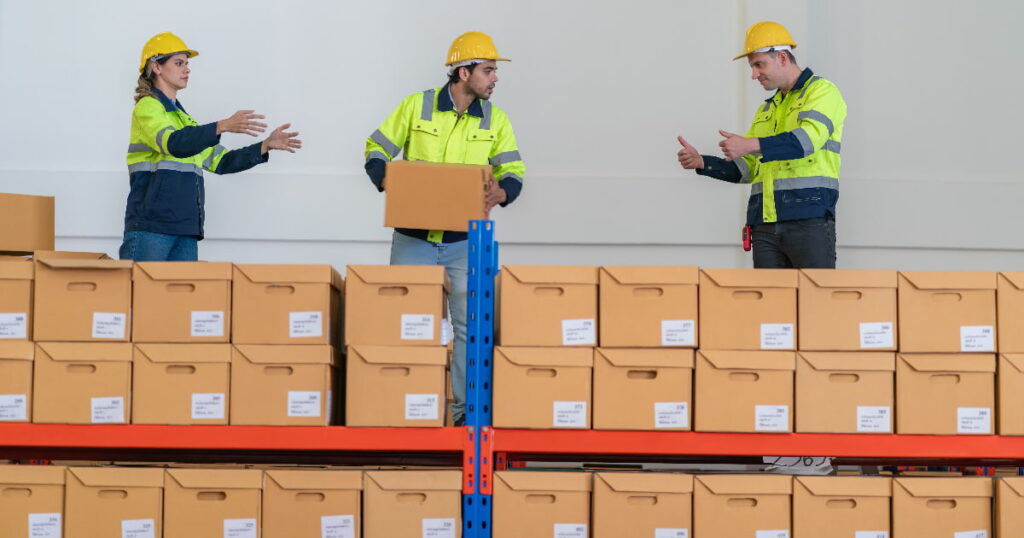
- By Haley
- August 28, 2025
Table of Contents
Key Highlights
- Re-packaging optimizes your supply chain by preparing products for efficient order fulfillment.
- Customized packaging and branding are powerful tools for enhancing customer satisfaction.
- Effective logistics services, including re-packaging, can lead to significant cost savings on shipping and returns.
- Re-packaging helps streamline warehouse management by improving inventory organization and space utilization.
- It allows for value-added services like kitting and bundling, creating new sales opportunities.
- Modern re-packaging relies on technology to ensure accuracy and speed in high-volume environments.
Introduction
In today’s fast-paced market, optimizing every step of your supply chain is no longer an option—it’s a necessity. While many focus on storage and shipping, a crucial intermediate step often gets overlooked: re-packaging. For high-volume warehouses, re-packaging is a transformative process that enhances logistics operations, improves efficiency, and elevates the customer experience. This service goes beyond simply putting items in a box; it is a strategic component of modern warehouse management that can define your brand’s success.
Understanding Re-Packaging in Modern Warehousing
Re-packaging involves modifying or replacing a product’s original packaging after it arrives at a warehouse but before it is shipped to the end customer. This can range from simple relabeling to creating complex kits from multiple components.
This process is vital for modern warehousing because it directly impacts the efficiency of your inventory management and the use of your warehouse space. By right-sizing packages and organizing goods for specific orders, you can store more products and fulfill orders faster. Let’s examine what re-packaging is and how it has evolved.

What Is Re-Packaging and Why Does It Matter?
At its core, repackaging is the service of altering a product’s container or presentation. This could mean moving items from a bulk shipping crate into individual, branded boxes, or combining several products into a single, ready-to-ship package. It is a critical step that bridges the gap between receiving goods from a manufacturer and the final order fulfillment process.
The importance of this service cannot be overstated. Proper repackaging ensures products are protected during transit, which reduces damage and lowers return rates. It also provides an opportunity to create a memorable unboxing moment, a key part of the modern customer experience.
For businesses with a diverse product line, repackaging allows for customization and flexibility. Whether you are creating promotional bundles or preparing items for a subscription box service, this process enables you to meet specific customer demands without holding excess pre-packaged inventory.
Historical Perspective on Warehousing and Packaging
Historically, packaging in warehouse management was straightforward. Goods arrived in bulk and were shipped out in much the same way. The focus of logistics operations was on moving large quantities of standardized products from point A to point B with little need for alteration.
The landscape began to shift dramatically with the rise of the internet and e-commerce in the 1990s. This technological revolution changed consumer behavior, creating demand for individual orders shipped directly to homes. Warehouses were no longer just storage depots but active fulfillment centers.
This evolution demanded a change in how products were handled. Historical packaging designed for pallets was unsuitable for individual shipments. As a result, re-packaging emerged as a necessary step in the product development journey, allowing businesses to adapt bulk goods for a direct-to-consumer model and refine their logistics operations.
Key Drivers Behind the Need for Re-Packaging
The increasing demand for re-packaging services is not accidental. It is driven by fundamental shifts in consumer expectations and the growing complexity of modern supply chain management. E-commerce fulfillment, in particular, has placed new pressures on businesses to deliver customized and timely orders.
Meeting these demands is essential for providing excellent customer service and fostering business growth. As companies expand, their ability to manage transportation services and vendor variability efficiently becomes a key competitive advantage. We will explore the specific drivers that make re-packaging a must-have.
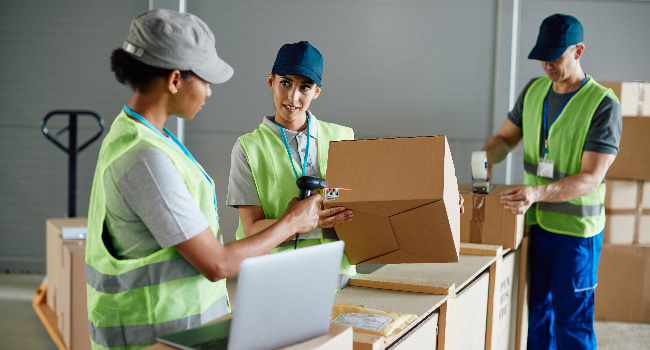
Changes in Consumer Demand and Order Customization
Today’s consumers expect more than just a product; they expect an experience. E-commerce businesses are a prime example of where this trend is most visible. Customers want personalized options, from engraved items to specially curated gift sets, which makes order customization a key differentiator.
Meeting these unique customer orders requires a flexible fulfillment process. Re-packaging is the mechanism that allows a business to offer this level of customization. For example, a company like WOLFpak includes unique items like branded tokens and stickers in their packaging to create a deeper connection with their community and boost customer satisfaction.
Ultimately, businesses that fail to adapt to these demands risk losing out to competitors. For any product line, the ability to tailor the final package to the customer’s wishes is a powerful tool for building loyalty and driving repeat sales.
Supply Chain Complexity and Vendor Variability
Modern supply chains are intricate networks involving numerous suppliers from around the world. This inherent supply chain complexity means that products often arrive at your warehouse in inconsistent packaging that is unsuitable for direct shipping to customers.
Furthermore, vendor variability is a significant challenge. One supplier might ship items in sturdy boxes, while another uses flimsy poly bags. A reliable fulfillment partner must standardize this inbound inventory to ensure product safety and brand consistency in the outbound logistics processes.
This is where re-packaging becomes a critical part of the range of services offered. It acts as a quality control checkpoint, transforming a chaotic mix of inbound goods into a streamlined, ready-to-ship inventory that reflects your brand’s standards.
The Role of Re-Packaging in Third-Party Logistics (3PL)
Third-party logistics (3PL) providers have become essential partners for businesses looking to optimize their logistics operations. These companies offer a wide array of fulfillment solutions designed to enhance supply chain efficiency.
Among the most important of these are value-added services, with re-packaging standing out as a key offering. A 3PL uses re-packaging to streamline fulfillment, reduce costs, and deliver a superior customer experience on behalf of its clients. Let’s look closer at how 3PLs integrate this service and how it differs from their core functions.
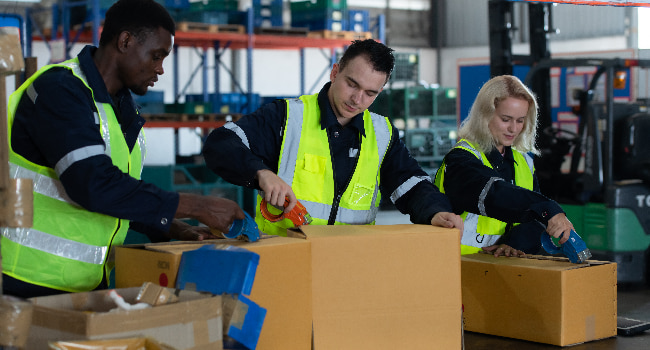
How 3PLs Integrate Re-Packaging Services
Third-party logistics (3PL) refers to outsourcing your supply chain and logistics operations to an external company. So, how does it work? A business, like a book publisher, can hire a 3PL to handle its entire order fulfillment process. The 3PL receives inventory at its fulfillment center, stores it, and when an order comes in, picks, packs, and ships the product to the customer.
Re-packaging is seamlessly integrated into this workflow as a value-added service. When the 3PL receives products from your supplier, it can perform tasks like customized packaging, labeling, or kitting before the items are even placed into storage. This preparation streamlines the final steps of the order fulfillment process.
By integrating these logistics services directly into warehouse management, a 3PL ensures that every order is prepared according to your exact specifications. This creates a cohesive supply chain where products are made retail-ready as soon as they enter the fulfillment center.
Differences Between Re-Packaging and Core 3PL Processes
It is important to distinguish between a 3PL’s core competencies and its value-added services like re-packaging. Most third-party logistics providers offer core services centered on transportation management and warehouse-based operations. These include freight forwarding, storage, order processing, and shipping.
Re-packaging, on the other hand, is a specialized, value-added service. While core logistics operations focus on the physical movement and storage of goods, re-packaging is about altering the product itself to meet specific market or customer needs. It is a transformative step rather than a transactional one.
This distinction matters because re-packaging directly affects inventory levels and supply chain visibility in a unique way. For example, kitting several items together creates a new, sellable unit that must be tracked differently. It adds a layer of complexity and value that goes beyond standard warehousing.
Essential Re-Packaging Services for High-Volume Warehouses
For a high-volume warehouse, efficiency is everything. Certain re-packaging services are indispensable for maintaining smooth logistics operations and accurate inventory tracking. These services are integrated with the warehouse management system to ensure every action is recorded and visible.
These fulfillment services transform standard products into customized, customer-ready orders at scale. From simple branding updates to complex assembly projects, these tasks are fundamental to modern e-commerce. Below, we explore some of the most critical re-packaging services.
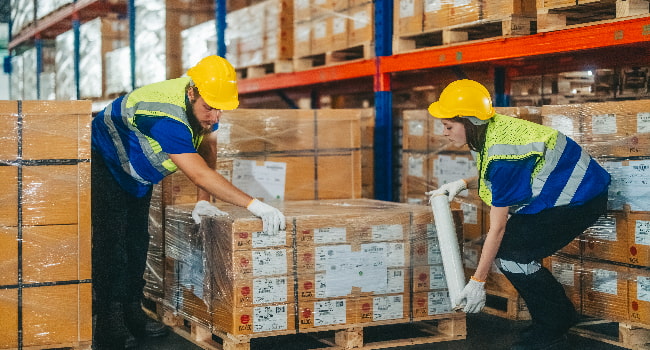
Relabeling and Branding for E-commerce Fulfillment
In the competitive world of ecommerce fulfillment, branding is paramount. Relabeling and customized packaging allow you to present a cohesive brand identity, even if your products are sourced from various manufacturers. It ensures every item that leaves your warehouse looks and feels like it came directly from you.
This process involves more than just slapping on a new sticker. It is a strategic effort to enhance the customer experience and reinforce your brand’s value. A well-designed package can make a lasting impression and differentiate your product line from competitors.
Furthermore, strategic packaging choices can significantly reduce shipping costs. By repacking items into smaller, lighter containers, you can lower the dimensional weight and secure more favorable carrier rates. Key services include:
- Applying custom brand labels and logos
- Using branded packing tape and materials
- Inserting marketing materials or thank-you notes
- Creating a unique unboxing experience
Kitting, Bundling, and Subscription Box Assembly
Kitting and bundling are powerful re-packaging services that involve assembling multiple individual products into a single package, sold as one unit. This is a popular strategy for creating gift sets, promotional offers, or product bundles that provide customers with added value.
For businesses that offer subscription boxes, assembly is a core operational need. As seen with companies like Irish at Heart, a 3PL can manage the complex logistics of sourcing various items and assembling them into curated boxes for international shipment. This service is essential for managing a constantly changing store inventory.
These processes help you manage stock levels more effectively. By combining slower-moving items with popular ones, you can improve inventory turnover. Kitting also simplifies the picking process, as warehouse staff only need to grab one pre-assembled kit instead of multiple separate items, speeding up fulfillment.
Steps in an Effective Warehouse Re-Packaging Process
A successful re-packaging operation is not improvised; it is a structured warehouse process designed for accuracy and speed. Each step is carefully managed and tracked within inventory management systems to ensure a seamless flow from receiving to final shipment.
This systematic approach minimizes errors in order processing and ensures the entire fulfillment process runs smoothly. It also provides the data needed for effective returns management. Let’s break down the key stages of an effective re-packaging workflow.

Receiving and Inspection of Goods
The re-packaging process begins the moment your inventory arrives at the warehouse. The first step is receiving, where your 3PL partner accepts the products from your supplier or manufacturing facility. This stage is crucial for setting the foundation for everything that follows.
Next comes a thorough goods inspection. The fulfillment team checks the shipment for accuracy and quality, ensuring nothing is missing or damaged during transit. This quality control step is vital for maintaining product safety and preventing defective items from reaching your customers.
Once inspected, the items are logged into an inventory management system. This action updates your stock levels in real-time and creates accurate inventory data. This detailed record-keeping is essential for tracking products through every subsequent stage of the re-packaging and fulfillment process.
Sorting, Organizing, and Preparing Inventory
After inspection, the next phase is preparing the inventory for efficient storage and picking. Effective inventory management at this stage involves sorting products based on SKU, re-packaging requirements, or other criteria. This organization is key to a productive warehouse.
Warehouse workers then store your products in strategically placed fulfillment centers to optimize the use of storage space and ensure quick access. Efficient warehouse management practices dictate that items are organized logically, making them easily accessible for fast picking when an order is placed.
This meticulous preparation is what enables rapid and accurate inventory tracking. When warehouse workers can locate items quickly, the entire fulfillment cycle is accelerated, leading to happier customers and more efficient operations.
Technology and Automation in Re-Packaging Operations
In the past, re-packaging was a manual, labor-intensive task. Today, advanced technology and automation have revolutionized the process, enabling warehouses to handle massive volumes with remarkable speed and precision. This technological integration is a key driver of business growth.
Warehouse management software and automated equipment work in tandem to streamline supply chain operations. This synergy minimizes human error, reduces costs, and provides the scalability needed to compete in the modern marketplace. Let’s explore the specific technologies making this possible.
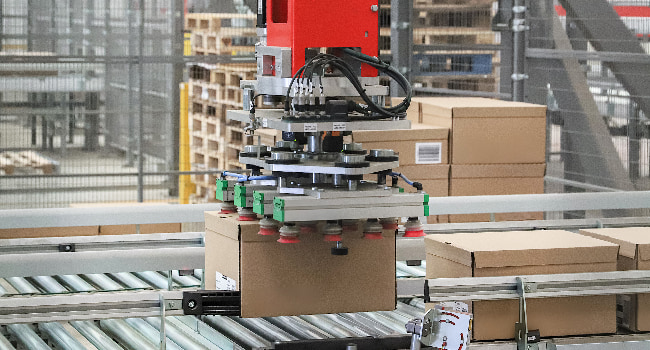
Software Solutions for Tracking and Quality Control
Modern re-packaging operations are powered by sophisticated warehouse management software. These platforms integrate directly with your e-commerce store, automatically receiving orders and initiating the fulfillment process. This seamless connection is the backbone of efficient inventory tracking.
Technology like RFID and GPS provides extended supply chain visibility, allowing you to monitor your products from the moment they enter the warehouse. This level of oversight is crucial for quality control, as it creates a digital record of every touchpoint in the re-packaging workflow.
Ultimately, these software solutions give you full visibility into your operations. You can receive real-time updates on inventory levels, track the progress of re-packaging tasks, and ensure that every order is fulfilled accurately and on time.
Automated Equipment for Fast and Accurate Re-Packaging
While software provides the brain, automated equipment provides the muscle for modern re-packaging. Machines can perform repetitive tasks like boxing, taping, and labeling much faster and more consistently than humans, significantly speeding up logistics processes across all warehouse locations.
This automation is critical for managing high order volumes and reducing labor costs. It also improves accuracy, minimizing costly errors that can lead to customer complaints and returns. By optimizing package dimensions, automated systems can even help secure lower shipping rates.
The difference between manual and automated approaches is stark. Automation offers clear advantages in speed, consistency, and cost-effectiveness, making it an essential investment for any high-volume operation.
Feature | Manual Re-Packaging | Automated Re-Packaging |
Speed | Slower, dependent on worker skill | Significantly faster and consistent |
Accuracy | Prone to human error | High precision, minimal errors |
Labor Costs | High, scales with volume | Lower long-term operational costs |
Scalability | Limited, difficult to scale quickly | Easily scalable for seasonal peaks |
Business Benefits of Implementing Re-Packaging
Adopting a strategic re-packaging process delivers a host of benefits that directly impact your bottom line and market position. The most significant advantages are substantial cost savings and a marked improvement in customer satisfaction, both of which are cornerstones of sustainable business growth.
By optimizing your fulfillment, you can expand your customer base and build a strong competitive advantage. Let’s delve into how re-packaging achieves these results by reducing operational waste and enhancing the overall customer experience.

Cost Savings Through Reduced Damages and Returns
One of the most immediate benefits of re-packaging is significant cost savings. By ensuring every product is securely packed in appropriate materials, you drastically reduce the risk of receiving damaged goods. This simple step can have a huge impact on your profitability.
Fewer damages naturally lead to fewer returns. An effective returns management process, also known as reverse logistics, is crucial, but preventing returns in the first place is far more cost-effective. Efficient re-packaging is a proactive measure that strengthens your supply chain operations against preventable losses.
This is a key way a third-party logistics provider can improve supply chain efficiency. By leveraging their expertise in packaging and transportation strategy, they minimize waste and streamline processes, turning a potential cost center into a source of savings.
Enhanced Customer Experience and Faster Fulfillment
In today’s market, the customer experience is just as important as the product itself. Re-packaging allows you to control the final presentation of your goods, creating a memorable unboxing moment that delights customers and strengthens brand loyalty. This is one of the main benefits of using a third-party logistics company.
Superior fulfillment services also mean faster order fulfillment. When items are prepped, kitted, and ready to go, the time from order placement to shipment is dramatically reduced. According to Verte, 90% of consumers track their packages, so providing fast shipping and reliable tracking information is essential for any online store.
This combination of speed, accuracy, and thoughtful presentation elevates the entire customer journey. It reduces the burden on your customer support team and builds a reputation for reliability, encouraging repeat business and positive reviews.
Challenges and Risks Associated with Re-Packaging
While the benefits are compelling, implementing re-packaging is not without its challenges. Businesses must navigate potential hurdles related to regulatory compliance, operational costs, and staffing. Ensuring product safety throughout the process is also a critical responsibility.
Effective risk management involves anticipating these issues and developing strategies to mitigate them. Understanding these potential drawbacks is the first step toward building a resilient and successful re-packaging operation. Let’s examine these challenges in more detail.
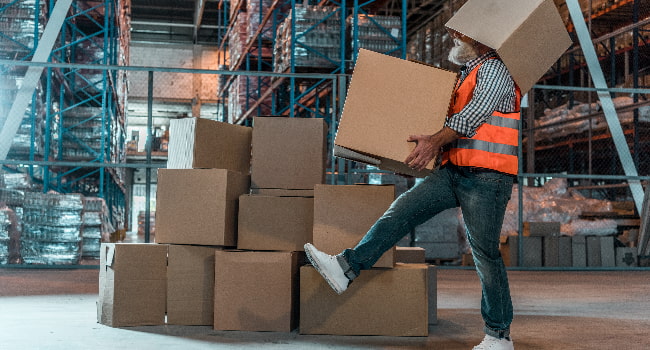
Regulatory Compliance and Product Safety
One of the primary risks in re-packaging is ensuring regulatory compliance. Many products, especially those in the food, cosmetics, or electronics industries, are subject to strict labeling and packaging laws, such as the Consumer Product Safety Improvement Act of 2008. Failure to comply can result in fines and legal issues.
Product safety is another major concern. The re-packaging process must not compromise the integrity or sterility of the item. This requires a controlled environment and strict warehouse management protocols to prevent contamination or damage.
This is one of the potential drawbacks of using third-party logistics; you must trust that your partner will manage compliance diligently. When selecting a 3PL, it is crucial to verify that they understand the regulations for your industry and have a proven track record of meeting the standards set by major carriers and government bodies.
Operational Costs and Staffing Considerations
Implementing an in-house re-packaging operation involves significant operational costs. You must invest in materials, equipment, and dedicated space within your warehouse. These upfront and ongoing expenses can be substantial, especially for a small or growing business.
Staffing is another major consideration. Re-packaging requires skilled warehouse workers who are trained in your specific processes. Recruiting, training, and managing this team add to your labor costs and administrative burden, impacting the efficiency of your overall logistics operations.
This is why many businesses choose to outsource. While outsourcing to a 3PL has its own costs, it often proves more economical than building the infrastructure and team from scratch. The decision depends on a careful analysis of your volume, complexity, and long-term business goals.
Conclusion
In summary, re-packaging is not just a trend but a crucial strategy for high-volume warehouses aiming to stay competitive in the fast-paced market. It addresses the complexities of modern supply chains while catering to evolving customer demands through enhanced efficiency and customization. By integrating effective re-packaging services, warehouses can significantly reduce operational costs, improve customer satisfaction, and streamline their logistics. Embracing technology and automation further propels these processes, ensuring that businesses can adapt and thrive amidst challenges. If you’re ready to enhance your warehouse operations and explore how re-packaging can benefit your business, don’t hesitate to reach out for a consultation today!
Frequently Asked Questions
Can re-packaging help my warehouse scale during seasonal peaks?
Absolutely. Re-packaging allows you to pre-assemble kits and bundles before the rush, freeing up warehouse space and labor during peak season. This proactive approach helps your logistics services manage increased volume efficiently without disrupting your supply chain or warehouse management.

Haley serves as the Marketing Manager for A1 Quality Logistical Solutions. She joined A1QLS in 2023 with her prior experience gained with GXO and XPO Logistics.
